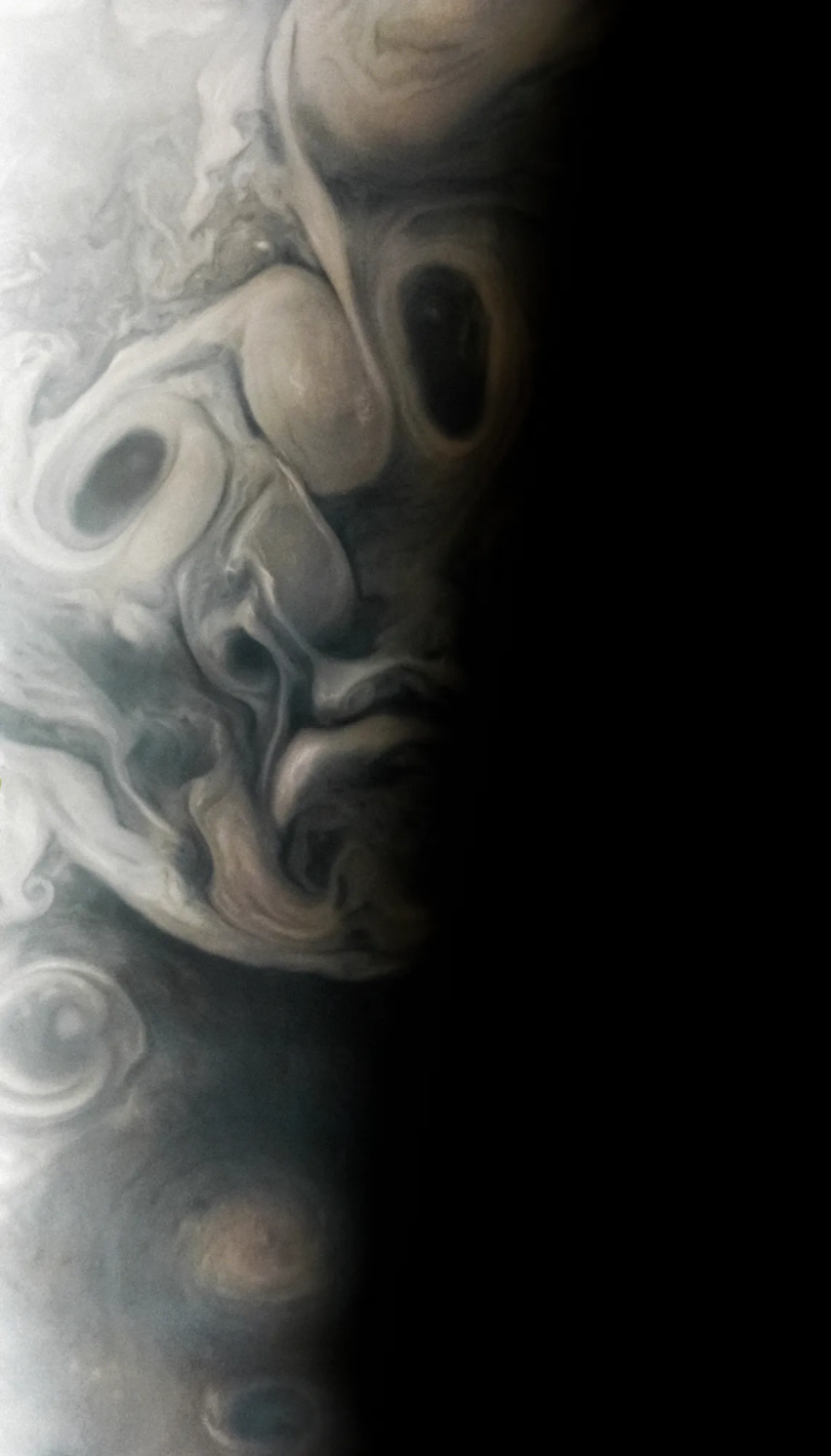In a spooky celestial encounter during its 54th close flyby of Jupiter, NASA's Juno spacecraft has encountered an eerie sight!
Capturing a region in the giant planet's northern expanse known as Jet N7, this snapshot showcases a vista of clouds and storms along Jupiter's terminator, the dividing line between its day and night sides.
Illuminated by a low-angle "moonlight," this eerie image offers a revealing glimpse into the intricate dynamics of the planet's atmosphere.
Spooky Season in Jupiter?
Often occurring in views from Juno, the cloud formations on Jupiter in this photo lend themselves to pareidolia, the effect that causes astronomers to perceive faces or other patterns in largely random patterns.
In this instance, a peculiar face-like formation seems to emerge from the clouds, adding a dash of whimsical spookiness to the cosmic scene!

This striking image was conjured by citizen scientist Vladimir Tarasov, utilizing raw data from the JunoCam instrument. At the time of capture, Juno was approximately 4,800 miles (about 7,700 kilometers) above Jupiter's cloud tops, positioned at a latitude of roughly 69 degrees north.
In related news, Juno has reportedly accomplished a significant feat by immortalizing Jupiter's electrifying lightning activity. Unlike Earth, where lightning bolts are born from water clouds and are more frequent near the equator, Jupiter's lightning arises from clouds containing an ammonia-water solution and predominantly appears near the poles.
It cast an otherworldly glow on the planet's mysterious surface. This finding offers a deeper understanding of the celestial mechanics at play on our neighboring gas giant.
On December 30, 2020, during Juno's 31st close passage by Jupiter, the spacecraft captured a captivating sight: a vortex near the planet's north pole, aglow with the radiance of a lightning bolt. Citizen scientist Kevin Gill meticulously processed the raw JunoCam data in 2022, creating a spellbinding visual treat.
Positioned at a latitude of approximately 78 degrees and soaring at an altitude of around 19,900 miles (32,000 kilometers) above Jupiter's resplendent cloud decks, Juno embarked on this awe-inspiring encounter like a cosmic witch on her broomstick, exploring the realms of the unknown.
Read Also : NASA's James Webb Discovers New, Never-Before-Seen Feature in Jupiter's Atmosphere-What Is It?
All About NASA's Juno Mission
NASA's Juno mission is dedicated to unraveling the mysteries of the planet Jupiter. Launched on August 5, 2011, Juno arrived at Jupiter's orbit on July 4, 2016.
The mission's primary objective is to delve into the origin and evolution of the gas giant by probing its composition, gravity field, magnetic field, and polar magnetosphere.
It is armed with a cauldron of scientific instruments, including a gravity science system, microwave radiometer, magnetometers, JunoCam, Jovian Auroral Distributions Experiment, and Ultraviolet Imaging Spectrometer, among others.
Related Article : NASA's Hubble Space Telescope Captures 'Butterfly Nebula' In Stunning Motion | Fun Facts About This Beautiful Space Butterfly

ⓒ 2025 TECHTIMES.com All rights reserved. Do not reproduce without permission.




